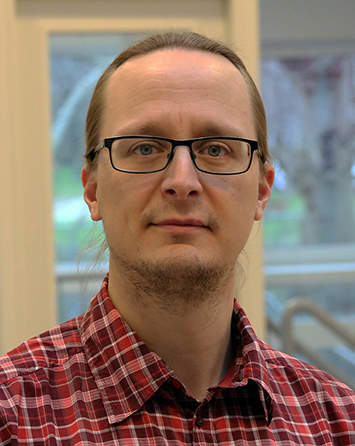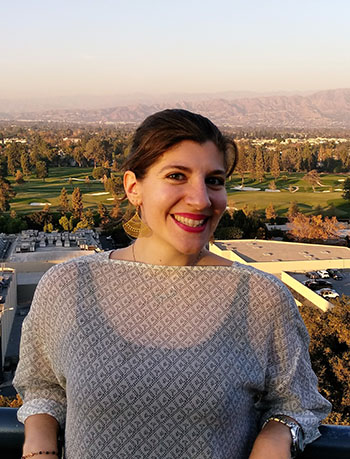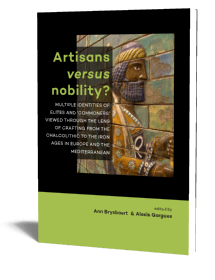Constructing monuments, perceiving monumentality and the economics of building
Theoretical and methodological approaches to the built environment
Edited by Ann Brysbaert, Victor Klinkenberg, Anna Gutiérrez Garcia-M., Irene Vikatou | 2018

Constructing monuments, perceiving monumentality and the economics of building
Theoretical and methodological approaches to the built environment
Edited by Ann Brysbaert, Victor Klinkenberg, Anna Gutiérrez Garcia-M., Irene Vikatou | 2018
Paperback ISBN: 9789088906961 | Hardback ISBN: 9789088906978 | Imprint: Sidestone Press | Format: 182x257mm | 342 pp. | Language: English | 46 illus. (bw) | 40 illus. (fc) | Keywords: archaeology, monumentality, large-scale building, theoretical and methodological approaches to architecture, 3D documentation techniques, architectural energetics, labour mobilization, socio-political strategies and conspicuous consumption, cross-cultural | download cover
Read online or downloaded 2149 times
-
Digital & Online access
This is a full Open Access publication, click below to buy in print, browse, or download for free.
-
Buy via Sidestone (EU & UK)
-
Buy via our Distributors (WORLD)
For non-EU or UK destinations you can buy our books via our international distributors. Although prices may vary this will ensure speedy delivery and reduction in shipping costs or import tax. But you can also order with us directly via the module above.
UK international distributor
USA international distributor
-
Bookinfo
Paperback ISBN: 9789088906961 | Hardback ISBN: 9789088906978 | Imprint: Sidestone Press | Format: 182x257mm | 342 pp. | Language: English | 46 illus. (bw) | 40 illus. (fc) | Keywords: archaeology, monumentality, large-scale building, theoretical and methodological approaches to architecture, 3D documentation techniques, architectural energetics, labour mobilization, socio-political strategies and conspicuous consumption, cross-cultural | download cover
Read online or downloaded 2149 times

We will plant a tree for each order containing a paperback or hardback book via OneTreePlanted.org.
In many societies monuments are associated with dynamic socio-economic and political processes that these societies underwent and/or instrumentalised. Due to the often large human and other resources input involved in their construction and maintenance, such constructions form an useful research target in order to investigate both their associated societies as well as the underlying processes that generated differential construction levels. Monumental constructions may physically remain the same for some time but certainly not forever. The actual meaning, too, that people associate with these may change regularly due to changing contexts in which people perceived, assessed, and interacted with such constructions.
These changes of meaning may occur diachronically, geographically but also socially. Realising that such shifts may occur forces us to rethink the meaning and the roles that past technologies may play in constructing, consuming and perceiving something monumental. In fact, it is through investigating the processes, the practices of building and crafting, and selecting the specific locales in which these activities took place, that we can argue convincingly that meaning may already become formulated while the form itself is still being created. As such, meaning-making and -giving may also influence the shaping of the monument in each of its facets: spatially, materially, technologically, socially and diachronically.
This volume varies widely in regional and chronological focus and forms a useful manual to studying both the acts of building and the constructions themselves across cultural contexts. A range of theoretical and practical methods are discussed, and papers illustrate that these are applicable to both small or large architectural expressions, making it useful for scholars investigating urban, architectural, landscape and human resources in archaeological and historical contexts. The ultimate goal of this book is to place architectural studies, in which people’s interactions with each other and material resources are key, at the crossing of both landscape studies and material culture studies, where it belongs.
Editors’ Biographies
List of contributors
Editors’ Acknowledgements
List of Abbreviations used in references
Part 1. Theoretical and practical considerations on monumentality
Constructing monuments, perceiving monumentality. Introduction
Ann Brysbaert
Mounds and monumentality in Neolithic Europe
Chris Scarre
Architectural conspicuous consumption and design as social strategy in the Argolid during the Mycenaean period
Kalliopi Efkleidou
Outer Worlds Inside
Lesley McFadyen
Part 2. Methodological approaches to studying architecture
Interpreting architecture from a survey context: recognising monumental structures.
Yannick Boswinkel
Three-dimensional documentation of architecture and archaeology in the field: combining intensive total station drawing and photogrammetry
Jari Pakkanen
Set in stone at the Mycenaean Acropolis of Athens. Documentation with 3D integrated methodologies
Elisavet P. Sioumpara
Labour mobilization and architectural energetics in the North Cemetery at Ayios Vasilios, Laconia, Greece
Sofia Voutsaki, Youp van den Beld, Yannick de Raaff
Part 3. Architectural energetics methods and applications
Comparative labour rates in cross-cultural contexts
Daniel R. Turner
Rethinking monumentality in Teotihuacan, Mexico
Maria Torras Freixa
Economic choice in Roman construction: case studies from Ostia
Janet DeLaine
Large-scale building in early imperial Tarraco (Tarragona, Spain) and the dynamics behind the creation of a Roman provincial capital landscape
Anna Gutiérrez Garcia-M., Maria Serena Vinci
Building materials, construction processes and labour: The Temple of Isis in Pompeii
Cathalin Recko
The construction process of the republican city walls of Aquileia (northeastern Italy): a case study of the quantitative analysis on ancient buildings
Jacopo Bonetto, Caterina Previato
Index

Prof. dr. Ann Brysbaert
Ann Brysbaert is Professor in Ancient Technologies, Materials and Crafts at the Faculty of Archaeology, Leiden University (NL), and since 1/3/2022 also the Director of the Netherlands Institute in Athens (NIA). She is Principal Investigator of the SETinSTONE project (ERC-CoG, grant nbr 646667) held at Leiden University. Previously, she held permanent and senior research positions at the Universities of Leicester, Glasgow, Heidelberg and Leiden. In 2014, she was Professeur Invitée at Bordeaux Montaigne University.

Dr. Victor Klinkenberg
Victor Klinkenberg is post-doctoral fellow at the Archaeological Research Unit of the University of Cyprus. He investigates social structures in the past through the analysis of the construction and use of domestic space. He specializes in techniques from digital archaeology (3D GIS, spatial analysis) and geoarchaeology (micromorphology). His PhD was on reconstructing activities at the LBA settlement at Tell Sabi Abyad, Syria, part of the ERC project Consolidating Empire (dunnu.nl). Afterwards he held a post-doc research position, and a lectureship teaching in the BA and MA Archaeology at Leiden University.

Dr. Anna Gutiérrez Garcia-M.
Anna Gutiérrez Garcia-M. received an MA in Lithic and Ceramic Analysis for Archaeologists (University of Southampton), and a PhD in Archaeology (Autonomous University of Barcelona-UAB). She developed her research at the Laboratory for the Study of Stones in Antiquity (LEMLA) at UAB, before being head of the Archaeometric Studies Unit at the Catalan Institute of Classical Archaeology (Tarragona, Spain) and being Chaire Junior LaScArBx at IRAMAT-CRP2A (UMR 5060 CNRS-Université de Bordeaux Montaigne, France).

Irene Vikatou M.Sc.
Irene Vikatou started her PhD at Leiden University (NL) on the topic of ancient Greek road networks in the Greek region, during pre-Roman and Roman times. The purpose of this research is to assess the extent to which Greek roads served as predecessors to the Roman ones. She studied Biology at the University of Athens and completed an M.Sc. in Osteoarchaeology and Funerary Archaeology at Leiden University in 2013. In this programme, she specialized in the analysis of human skeletal remains from archaeological excavations, focusing on pathological lesions caused by external factors, such as trauma and strenuous physical activity.
Abstract:
In many societies monuments are associated with dynamic socio-economic and political processes that these societies underwent and/or instrumentalised. Due to the often large human and other resources input involved in their construction and maintenance, such constructions form an useful research target in order to investigate both their associated societies as well as the underlying processes that generated differential construction levels. Monumental constructions may physically remain the same for some time but certainly not forever. The actual meaning, too, that people associate with these may change regularly due to changing contexts in which people perceived, assessed, and interacted with such constructions.
These changes of meaning may occur diachronically, geographically but also socially. Realising that such shifts may occur forces us to rethink the meaning and the roles that past technologies may play in constructing, consuming and perceiving something monumental. In fact, it is through investigating the processes, the practices of building and crafting, and selecting the specific locales in which these activities took place, that we can argue convincingly that meaning may already become formulated while the form itself is still being created. As such, meaning-making and -giving may also influence the shaping of the monument in each of its facets: spatially, materially, technologically, socially and diachronically.
This volume varies widely in regional and chronological focus and forms a useful manual to studying both the acts of building and the constructions themselves across cultural contexts. A range of theoretical and practical methods are discussed, and papers illustrate that these are applicable to both small or large architectural expressions, making it useful for scholars investigating urban, architectural, landscape and human resources in archaeological and historical contexts. The ultimate goal of this book is to place architectural studies, in which people’s interactions with each other and material resources are key, at the crossing of both landscape studies and material culture studies, where it belongs.
Contents
Editors’ Biographies
List of contributors
Editors’ Acknowledgements
List of Abbreviations used in references
Part 1. Theoretical and practical considerations on monumentality
Constructing monuments, perceiving monumentality. Introduction
Ann Brysbaert
Mounds and monumentality in Neolithic Europe
Chris Scarre
Architectural conspicuous consumption and design as social strategy in the Argolid during the Mycenaean period
Kalliopi Efkleidou
Outer Worlds Inside
Lesley McFadyen
Part 2. Methodological approaches to studying architecture
Interpreting architecture from a survey context: recognising monumental structures.
Yannick Boswinkel
Three-dimensional documentation of architecture and archaeology in the field: combining intensive total station drawing and photogrammetry
Jari Pakkanen
Set in stone at the Mycenaean Acropolis of Athens. Documentation with 3D integrated methodologies
Elisavet P. Sioumpara
Labour mobilization and architectural energetics in the North Cemetery at Ayios Vasilios, Laconia, Greece
Sofia Voutsaki, Youp van den Beld, Yannick de Raaff
Part 3. Architectural energetics methods and applications
Comparative labour rates in cross-cultural contexts
Daniel R. Turner
Rethinking monumentality in Teotihuacan, Mexico
Maria Torras Freixa
Economic choice in Roman construction: case studies from Ostia
Janet DeLaine
Large-scale building in early imperial Tarraco (Tarragona, Spain) and the dynamics behind the creation of a Roman provincial capital landscape
Anna Gutiérrez Garcia-M., Maria Serena Vinci
Building materials, construction processes and labour: The Temple of Isis in Pompeii
Cathalin Recko
The construction process of the republican city walls of Aquileia (northeastern Italy): a case study of the quantitative analysis on ancient buildings
Jacopo Bonetto, Caterina Previato
Index

Prof. dr. Ann Brysbaert
Ann Brysbaert is Professor in Ancient Technologies, Materials and Crafts at the Faculty of Archaeology, Leiden University (NL), and since 1/3/2022 also the Director of the Netherlands Institute in Athens (NIA). She is Principal Investigator of the SETinSTONE project (ERC-CoG, grant nbr 646667) held at Leiden University. Previously, she held permanent and senior research positions at the Universities of Leicester, Glasgow, Heidelberg and Leiden. In 2014, she was Professeur Invitée at Bordeaux Montaigne University.

Dr. Victor Klinkenberg
Victor Klinkenberg is post-doctoral fellow at the Archaeological Research Unit of the University of Cyprus. He investigates social structures in the past through the analysis of the construction and use of domestic space. He specializes in techniques from digital archaeology (3D GIS, spatial analysis) and geoarchaeology (micromorphology). His PhD was on reconstructing activities at the LBA settlement at Tell Sabi Abyad, Syria, part of the ERC project Consolidating Empire (dunnu.nl). Afterwards he held a post-doc research position, and a lectureship teaching in the BA and MA Archaeology at Leiden University.

Dr. Anna Gutiérrez Garcia-M.
Anna Gutiérrez Garcia-M. received an MA in Lithic and Ceramic Analysis for Archaeologists (University of Southampton), and a PhD in Archaeology (Autonomous University of Barcelona-UAB). She developed her research at the Laboratory for the Study of Stones in Antiquity (LEMLA) at UAB, before being head of the Archaeometric Studies Unit at the Catalan Institute of Classical Archaeology (Tarragona, Spain) and being Chaire Junior LaScArBx at IRAMAT-CRP2A (UMR 5060 CNRS-Université de Bordeaux Montaigne, France).

Irene Vikatou M.Sc.
Irene Vikatou started her PhD at Leiden University (NL) on the topic of ancient Greek road networks in the Greek region, during pre-Roman and Roman times. The purpose of this research is to assess the extent to which Greek roads served as predecessors to the Roman ones. She studied Biology at the University of Athens and completed an M.Sc. in Osteoarchaeology and Funerary Archaeology at Leiden University in 2013. In this programme, she specialized in the analysis of human skeletal remains from archaeological excavations, focusing on pathological lesions caused by external factors, such as trauma and strenuous physical activity.
-
Digital & Online access
This is a full Open Access publication, click below to buy in print, browse, or download for free.
-
Buy via Sidestone (EU & UK)
-
Buy via our Distributors (WORLD)
For non-EU or UK destinations you can buy our books via our international distributors. Although prices may vary this will ensure speedy delivery and reduction in shipping costs or import tax. But you can also order with us directly via the module above.
UK international distributor
USA international distributor
- Browse all books by subject
-
Search all books

We will plant a tree for each order containing a paperback or hardback book via OneTreePlanted.org.
You might also like:
© 2025 Sidestone Press KvK nr. 28114891 Privacy policy Sidestone Newsletter Terms and Conditions (Dutch)






